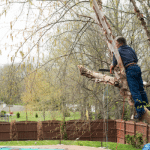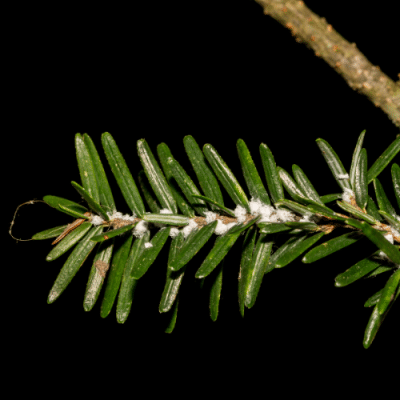The hemlock woolly adelgid has been recorded as a pest nationwide as far north as Maine and as far west as Oregon. But what exactly are they and what threat do they pose?
Description
Native to Japan and China, this pest has spread through a large portion of the United States. If you suspect infection of your hemlocks and spruce trees, check for these descriptions and seek help immediately. The most obvious sign of a hemlock woolly adelgid infestation is the copious masses of white filaments of wax produced by females. These “cottony” masses normally persist throughout the season and into the following year, even after the insects are dead. Overwintering females are black, oval, and soft bodied, concealed under the masses and hiding from June to the early April hatching season.
Signs Of An Hemlock Woolly Adelgids Infestation
Some of the telltale signs of an infestation to your hemlock trees include white wooly masses previously mentioned, needle loss and branch dieback of hemlock, premature needle dropping, thinning in the crown, and gray-tinted, dying needles. The white egg sacks are about a quarter the size of a cotton swab and usually found on the underside of branches or at the base of needles. This pest feeds on the tree, disrupting the flow of nutrients. This is why the symptoms of damage become apparent quickly in the health of needles or twigs.
Damage and Treatment
The hemlock woolly adelgid feeds deep within plant tissues by inserting its long sucking mouth into the underside of the base of hemlock tree needles. It taps directly into the tree’s food storage cells, not the sap. The tree responds by walling off the wound created by the insertion of the stylets. This disrupts the flow of nutrients to the needles and eventually leads to the death of the needles and twigs. Terminal buds will also die resulting in little to no new shoot growth. Dieback of major limbs can occur within two years and generally progresses from the bottom of the tree upward, with the death of the entire tree ranging from four to ten years.
A single female can lay about 200 eggs per season, with every female of that brood doing the same. This can average around 40,000 eggs per year stemming from a single female. Currently, the two approaches for managing HWA infestations are chemical insecticides and the use of natural enemy predator species as biological control. Some species of beetles and fungi have shown to promising effectiveness in large scale control, but homeowners would be wise to use an integrated management approach. n lieu of systemic insecticides, spraying hemlock foliage with properly labeled horticultural oils and insecticidal soaps may be effective when trees are small enough to be saturated in order to ensure that the insecticide comes in contact with the adelgid.
Keep your trees safe this year with help from Strunk Tree Service. We service our clients with many different specialized tree services and maintenance including insect and tree disease management. Can your trees afford another year without maintenance? Call today!




